The content of this post was originally part of the 8/13/23 What’s What entry but I thought it might be better to take it out as a separate piece (not to be confused with this book which many of us of a certain age read in high school English class). The premise is to compare Esterbrook’s custom Scribe nib to another architect nib I have from Peyton Street Pens.
////////////////////////////////////////////////////////
The Scribe nib is a collaboration between Esterbrook and JJ (Josh) Lax, a nibmeister from Brooklyn, New York. The Scribe is what Josh calls his architect grind. It’s one of four nibs Esterbrook offers with specialty grinds from different nibmeisters. You can get the nibs in Esterbrook pens you buy new or you can get them sold separately direct from Esterbrook, which is what I did. I ordered it in the Estie size, which is Esterbrook’s flagship model that takes a Jowo #6.
The Scribe nib from Esterbrook starts out as a Jowo #6 broad steel nib (as does the Peyton Street architect) before Josh does his work. The finished product has clean grinds and smooth finish.
 Two nibs enter, two nibs leave. The stakes aren't what you'd call life or death.
Two nibs enter, two nibs leave. The stakes aren't what you'd call life or death.
The variation between the two nibs is shown well here. The angles of the nib faces are quite different. If I hold a protractor up the image and measure up the face of the nib from the horizontal plane to the top end of the tipping, the Scribe is around a 30° angle and the Peyton Street is around 60°. These are not scientific measurements (see previous disclaimer) but even casually speaking that’s a sizeable difference. How does it affect writing?
Here I am holding the pens at what I consider my normal natural writing angle. The barrel of the pen (or the cap of a shorter posted pen like the Franklin-Christoph) sits against the bottom of the base knuckle of my index finger.
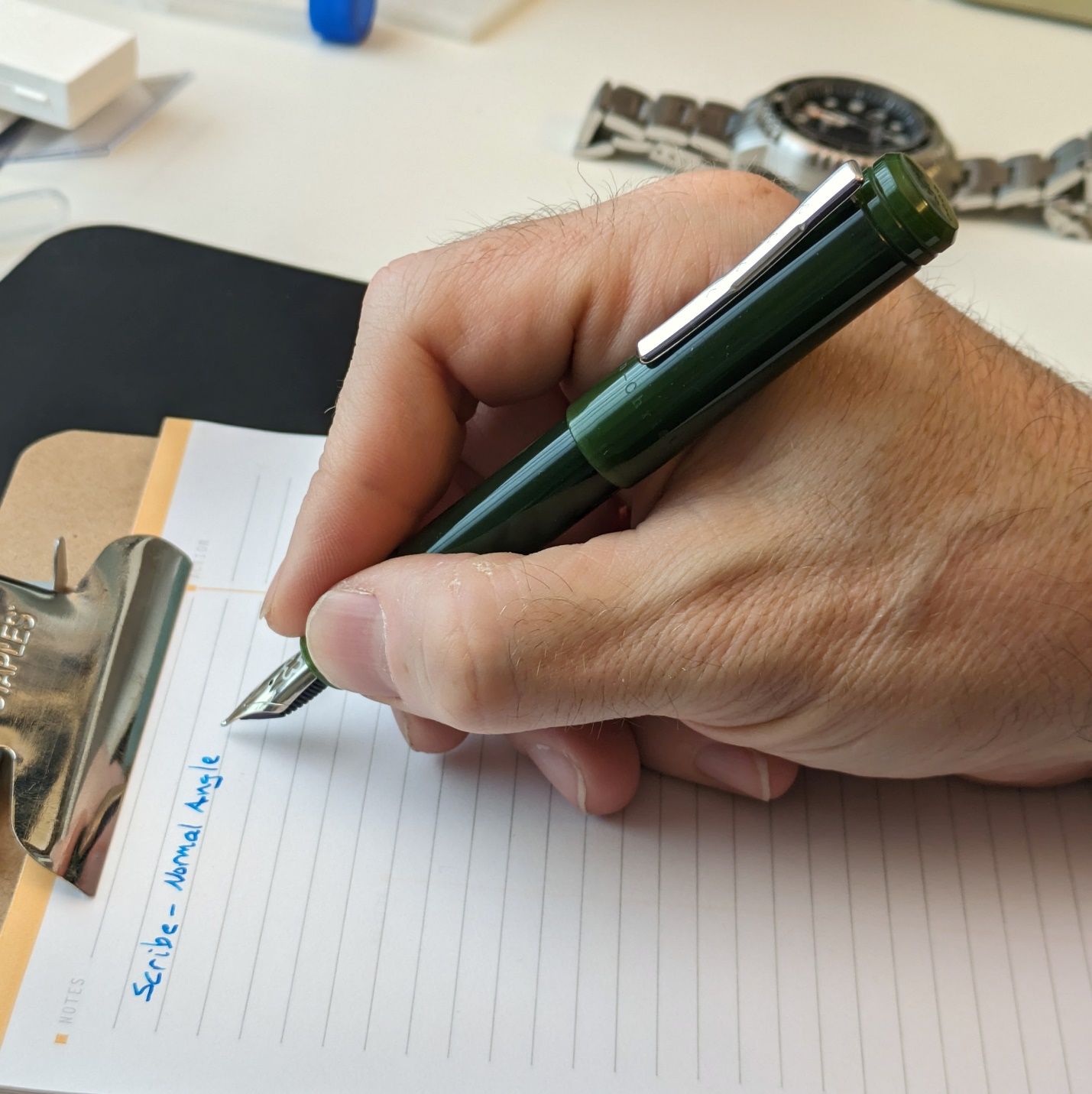 Scribe nib, normal writing angle
Scribe nib, normal writing angle
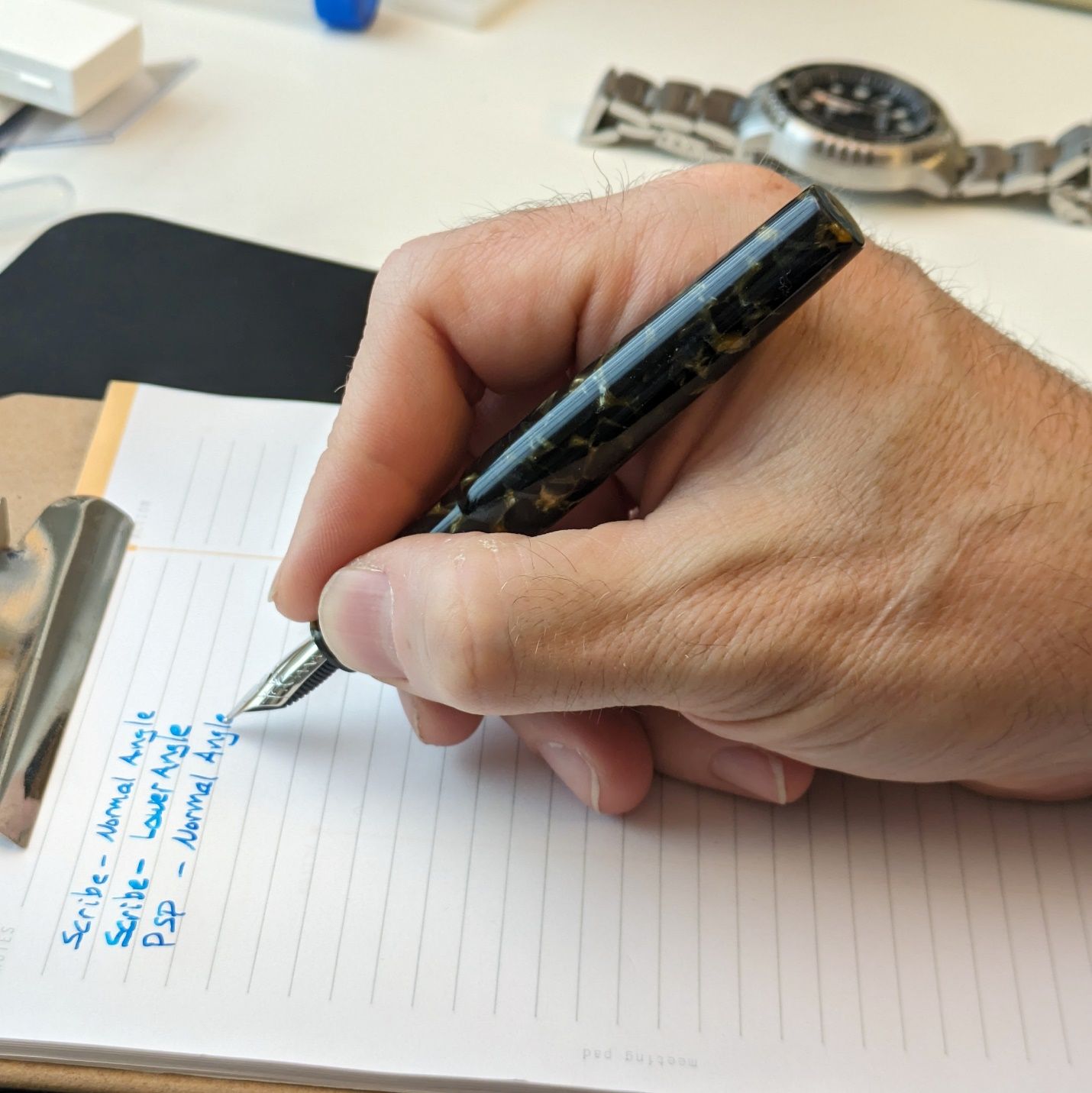 Peyton Street nib, normal writing angle
Peyton Street nib, normal writing angle
Writing with the pens at this angle yielded the following results.

Not all that different in appearance, but at this angle the Scribe nib is scratchy on the paper because it is writing mostly with the top corner of the nib rather than the full face. It’s not how I want this nib to feel. The Peyton Street nib is also a bit scratchy at this angle but decidedly less than the Scribe.
Then I adjusted each pen to a writing angle that was the best match for the face of the nib making full contact with the paper.
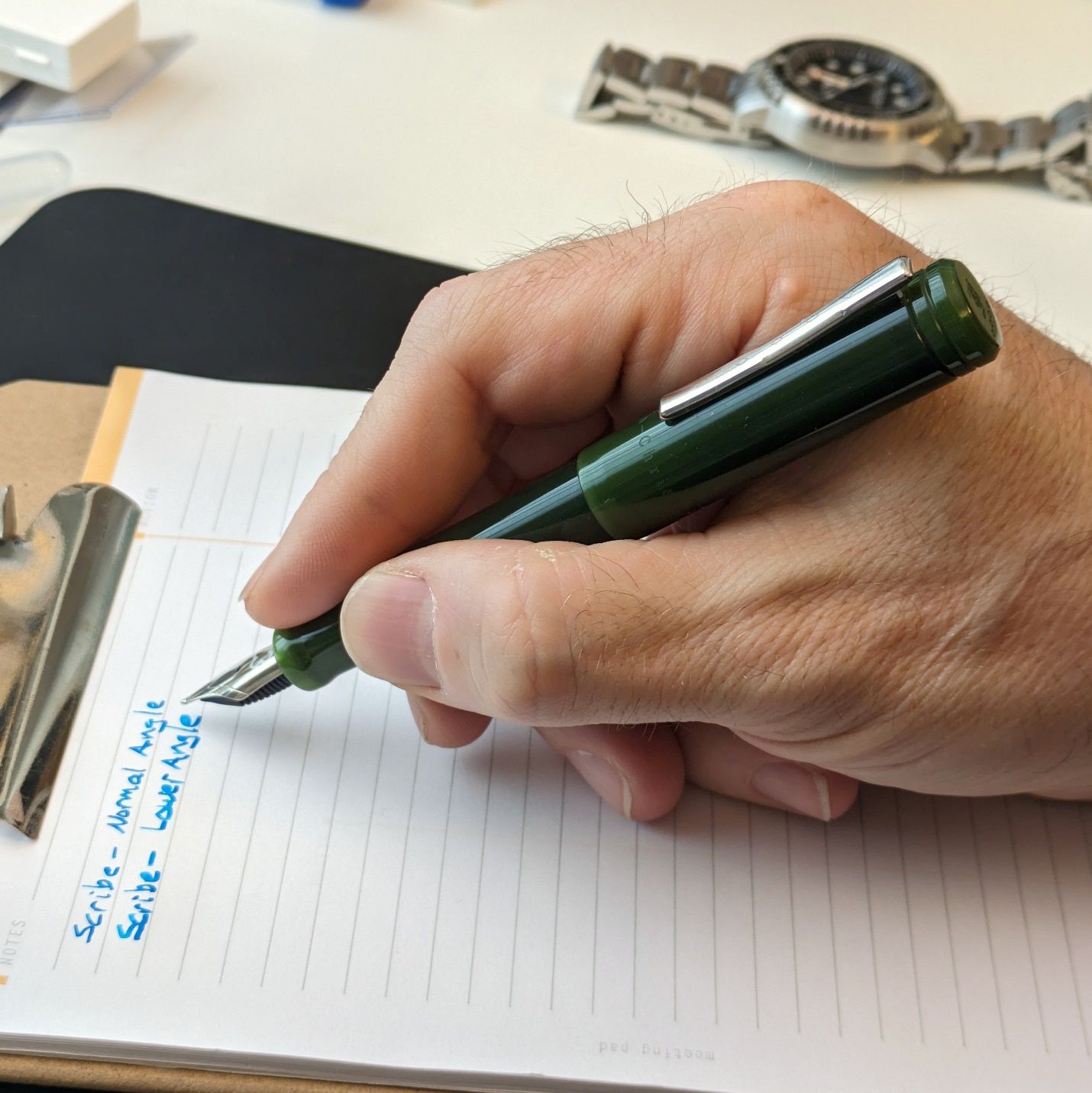 Scribe nib, adjusted writing angle
Scribe nib, adjusted writing angle
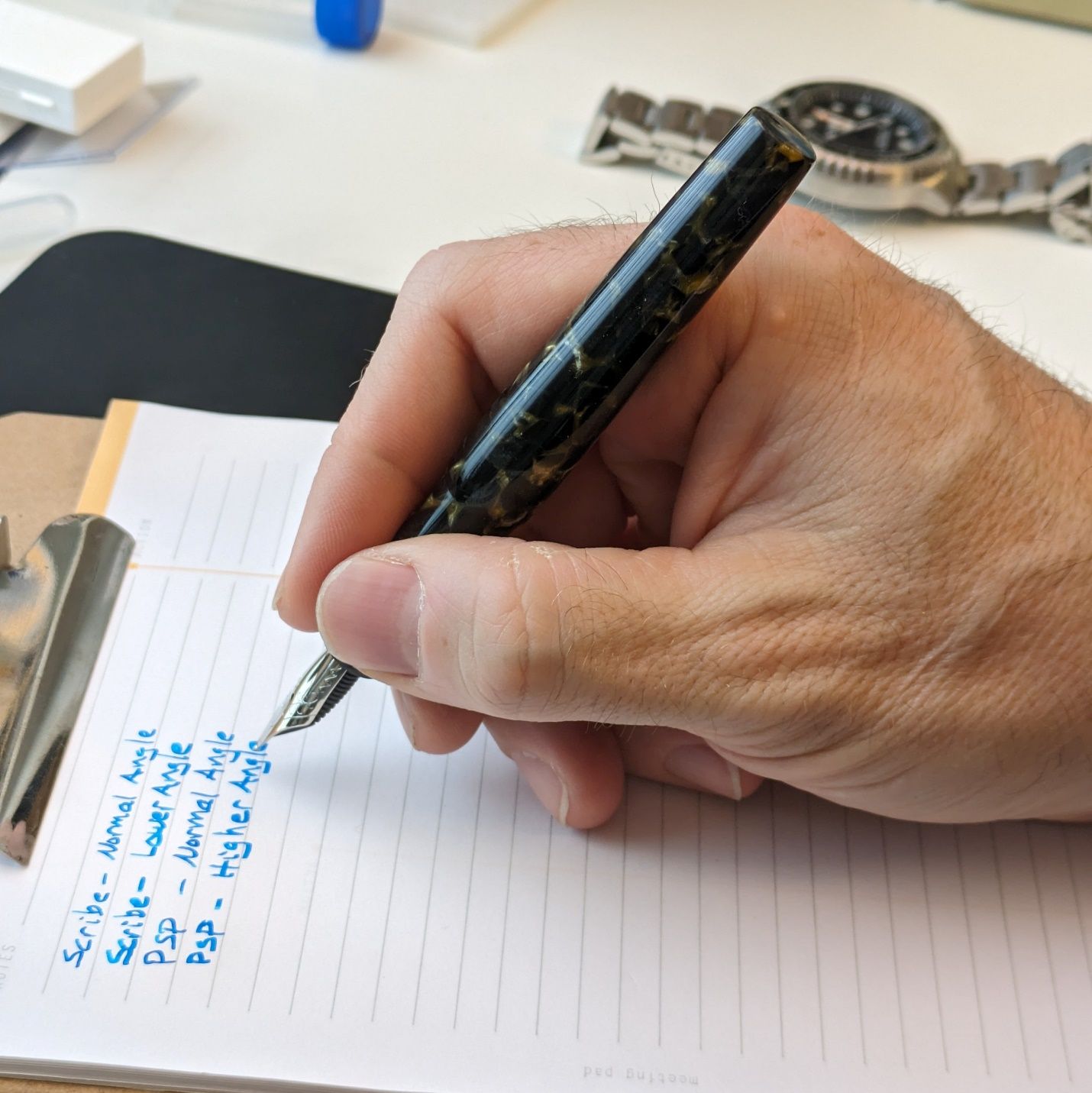 Peyton Street Nib, adjusted writing angle
Peyton Street Nib, adjusted writing angle
The results from adjusted writing angles show what an architect grind can really do.

The contrast of having the right angle to the paper versus a suboptimal angle are significant when you see them alongside one another.
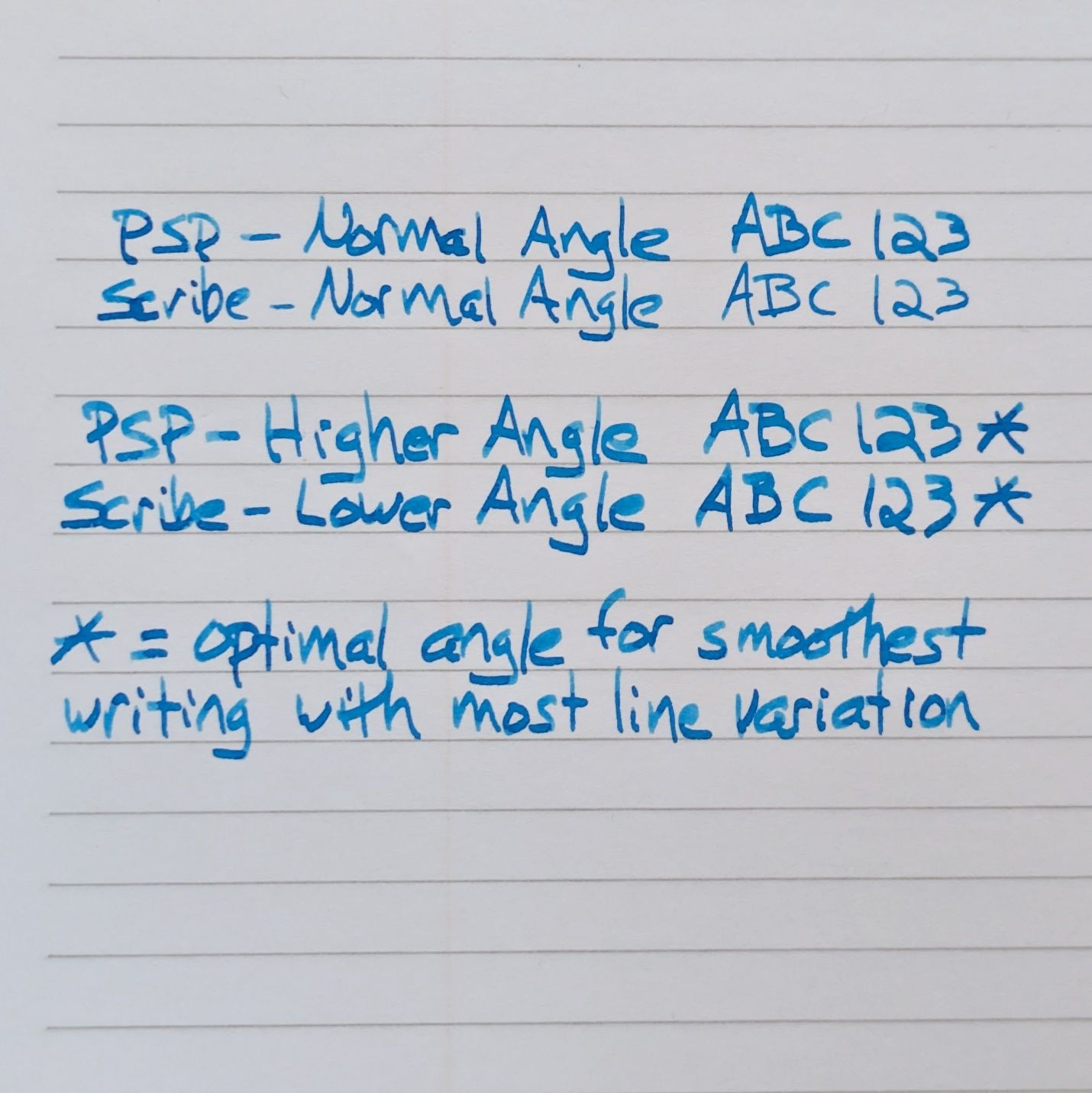
Both nibs glide smoothly on the paper with generous ink flow. Both nibs now give the wide cross stroke and narrow down stroke the grind intends. Both nibs now feel like they’re in the sweet spot. But does the sweet spot of each nib match the sweet spot for how I normally hold a pen? For one nib it’s close. For the other nib it’s not.
The Peyton Street nib needs to be held at a higher angle than normal, but it’s a short trip. I find it easier to adjust the pen angle up slightly to hit the sweet spot. I can hold a pen there to write with it and not feel uncomfortable. Would I want to do it continuously for several pages? Perhaps not, but I could also do something to change the angle of a writing surface and make up some of the difference that way so the adjustment in hand is reduced.
I must hold the Scribe at a significantly lower angle to match up the nib with the paper. This is not a position at which I would choose to write for much more than the purposes of this demonstration. It’s awkward, like I’m trying to write on a slope going away from me, and it doesn’t give the feeling of being precise with my writing.
So, what have I found from this experience?
The Scribe nib writes an excellent line when it’s in the sweet spot. If you take nothing else from what I’ve said here, take that piece. This nib does what it’s made to do.
Getting an off the shelf nib grind can be hit or miss and the amount by which you miss can change depending on the type of grind you choose. In the case of the Scribe nib, it’s missing me, but…
I think producing a nib like this for large scale sale and use is challenging. I’ve always thought my grip and writing angle is mostly neutral and I can get along with several nib types. Even so, not every nib I try will work for me. Just like not every t-shirt labeled with my size fits the way I like. Think of the countless ways people grip a pen. An architect nib made without the chance to account for individual preferences will have its best results within a small window of those grips. Josh and Esterbrook should be commended for doing this nib in the program because I don’t imagine it’s easy.
This is not a final diagnosis. It’s one case of writing with the Scribe nib in one pen body. I can reverse the nibs between the two pens used here. I have a few other pens with Jowo #6 sections where I can try the Scribe nib to see if that makes a difference. I’m not sure how much difference may be out there, but it’s worth exploring.
Addendum to this point: trying the Scribe nib in another pen body (the Brockton) did not do anything to change the writing angle needed to get the desired line. It is still too low an angle for me to use the nib so I emptied the pen and the Scribe nib sits idle for now.